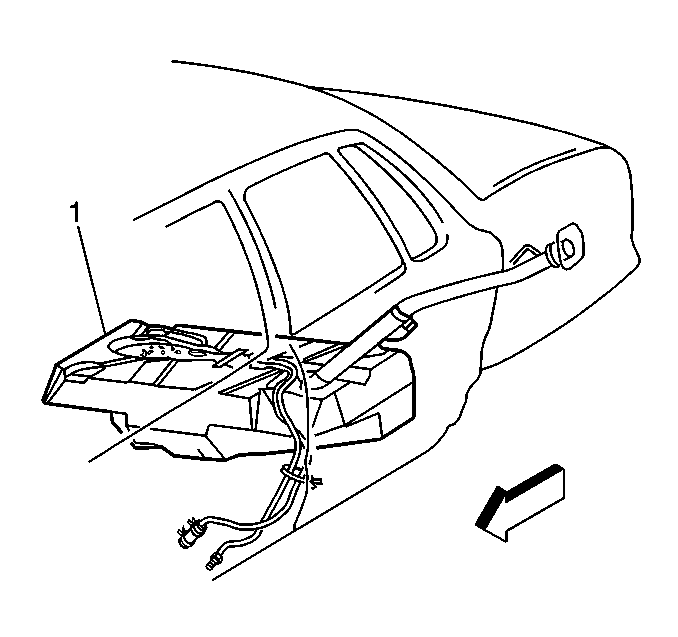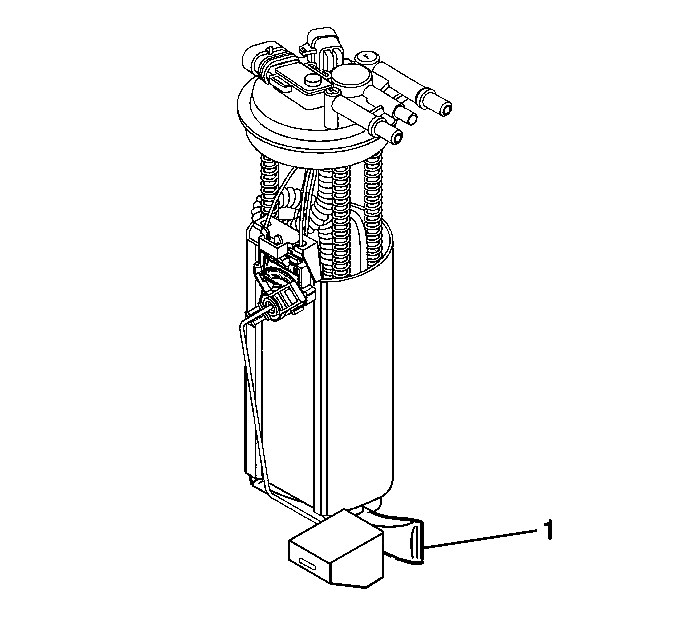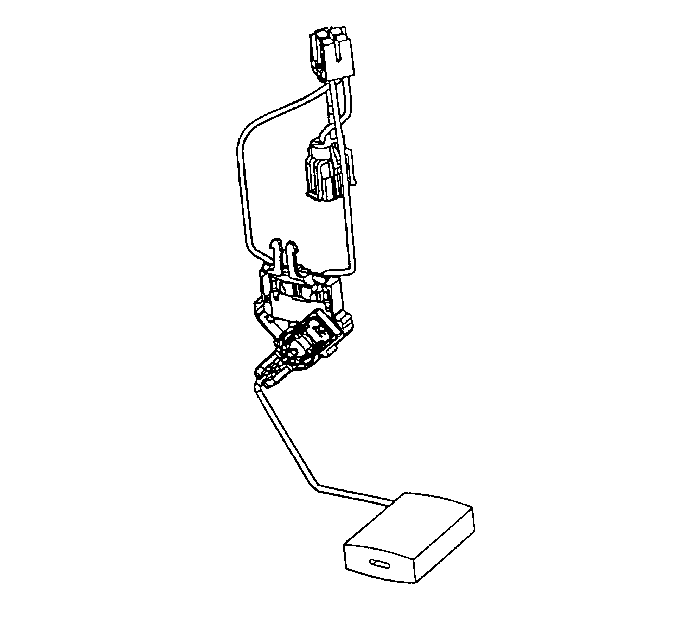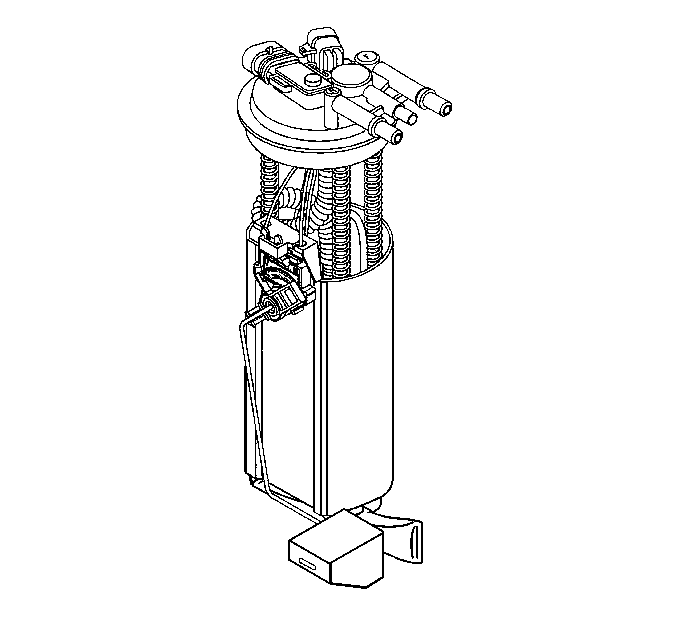Removal Procedure
Caution: Gasoline or gasoline vapors are highly flammable. A fire could occur if an ignition source is present. Never drain or store gasoline or diesel fuel in an open container, due to the possibility of fire or explosion. Have a dry chemical (Class B) fire extinguisher nearby.
- Relieve the fuel system fuel pressure. Refer to Fuel Pressure Relief .
- Drain the fuel tank (1). Refer to Fuel Tank Draining .
- Remove the fuel sender assembly. Refer to Fuel Sender Assembly Replacement .

Disassemble Procedure
- Note the position of the fuel strainer (1) for installation.
- Support the reservoir with one hand and grasp the fuel strainer with the other hand.
- Place the fuel sender assembly upside down on a bench.
- Remove the fuel sender strainer.
- Inspect the fuel sender strainer. If the strainer is contaminated, the fuel tank should be cleaned. Refer to Fuel System Cleaning . Discard the fuel level sensor after inspection.
- Disconnect the electrical connectors from the fuel pump and cover assembly.
- Remove the fuel level sensor assembly.


Assemble Procedure
- Position the new fuel sender strainer (1) on the fuel sender. Push the outer edge of the strainer until the strainer is fully seated.
- Install the new fuel level sensor assembly.
- Connect the electrical connectors to the fuel pump and the cover assembly.

Important: Always install a new fuel level strainer when installing a fuel sender or a fuel level sensor assembly.

Installation Procedure
- Install the fuel sender assembly. Refer to Fuel Sender Assembly Replacement .
- Add fuel to the fuel tank.
- Install the fuel filler cap.
- Connect the negative battery cable. Refer to Battery Negative Cable Disconnection and Connection in Engine Electrical.
- Inspect for leaks.

Notice: Use the correct fastener in the correct location. Replacement fasteners must be the correct part number for that application. Fasteners requiring replacement or fasteners requiring the use of thread locking compound or sealant are identified in the service procedure. Do not use paints, lubricants, or corrosion inhibitors on fasteners or fastener joint surfaces unless specified. These coatings affect fastener torque and joint clamping force and may damage the fastener. Use the correct tightening sequence and specifications when installing fasteners in order to avoid damage to parts and systems.
| 5.1. | Turn ON the ignition switch for 2 seconds. |
| 5.2. | Turn OFF the ignition switch for 10 seconds. |
| 5.3. | Turn ON the ignition switch. |
| 5.4. | Check for fuel leaks. |
